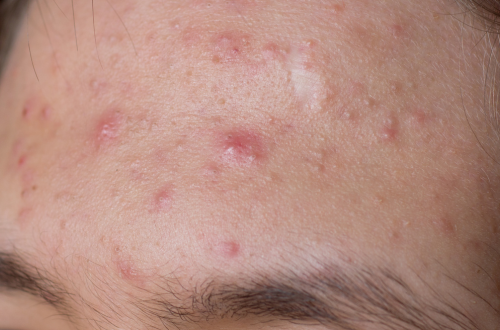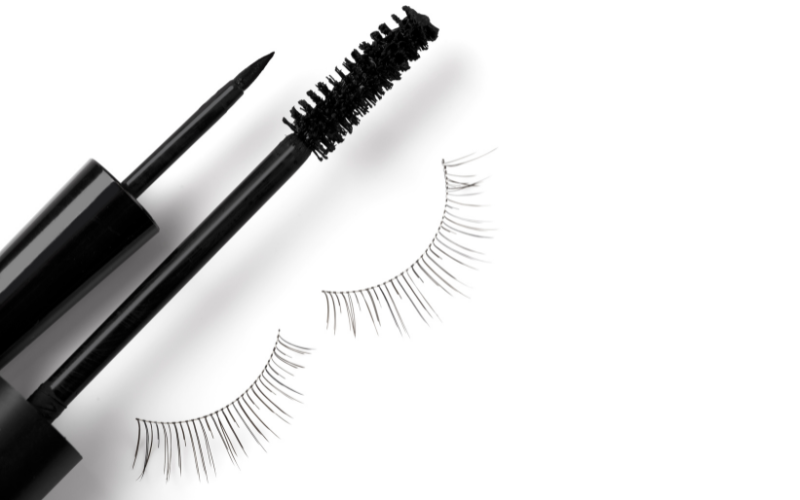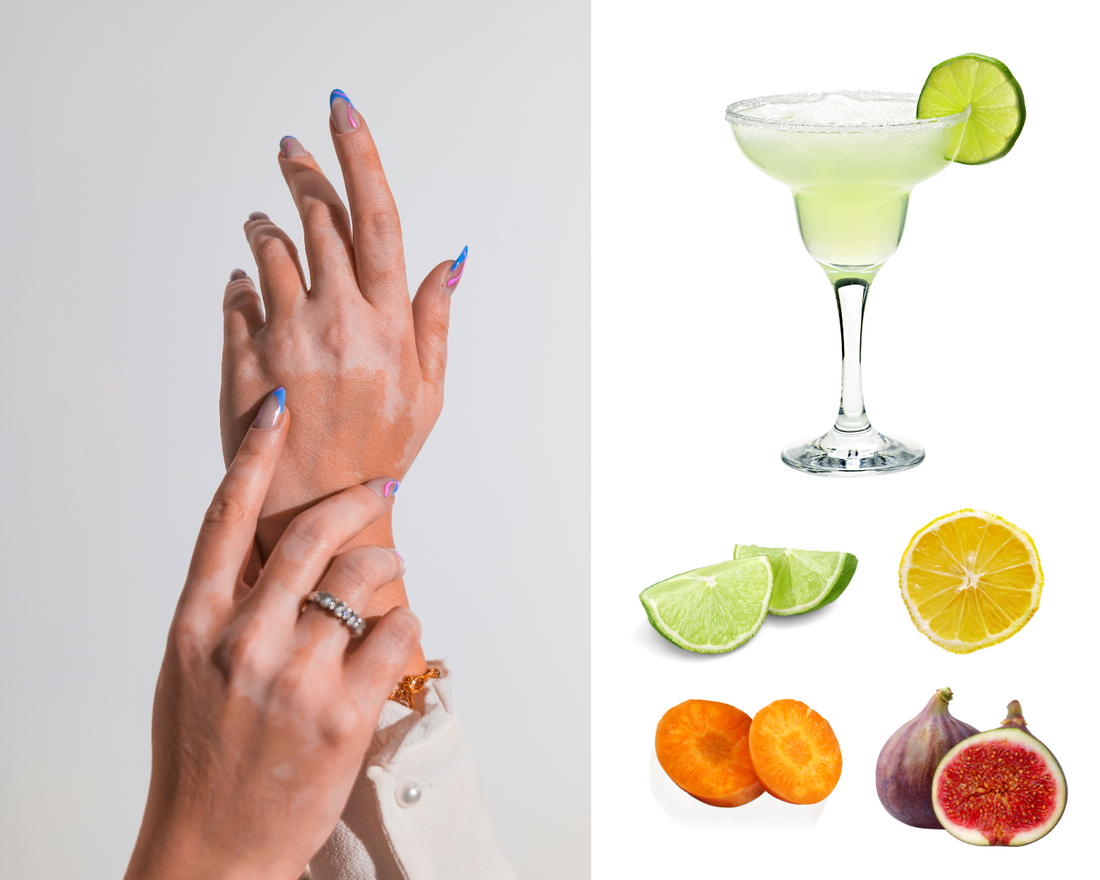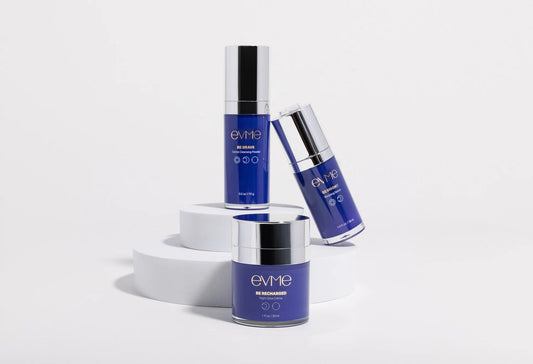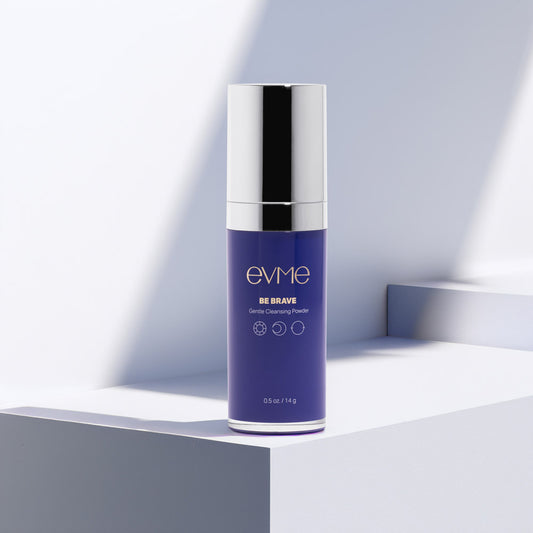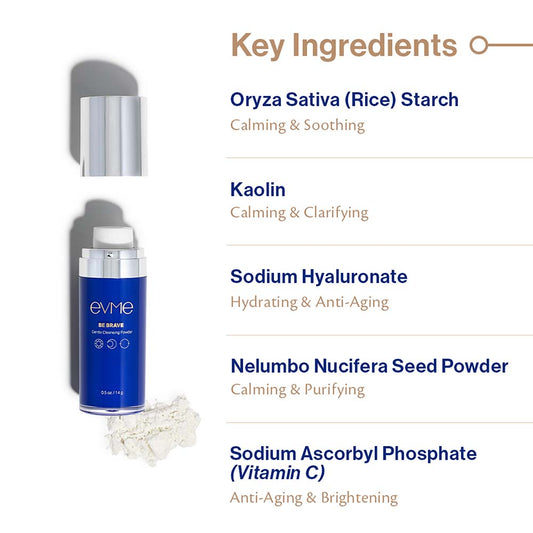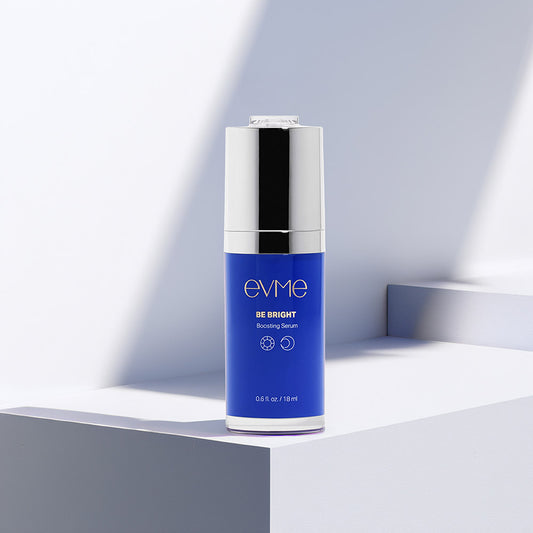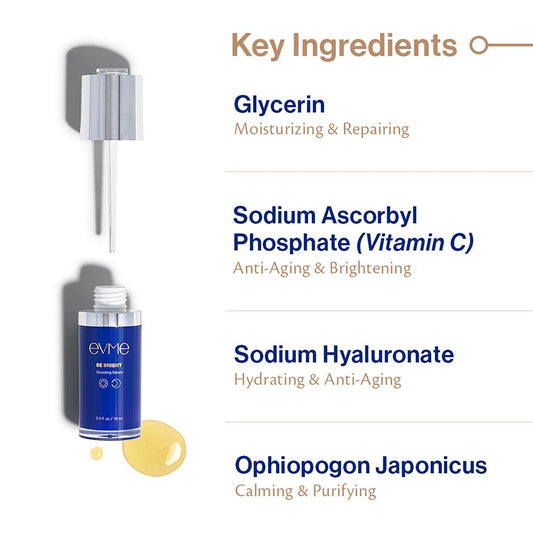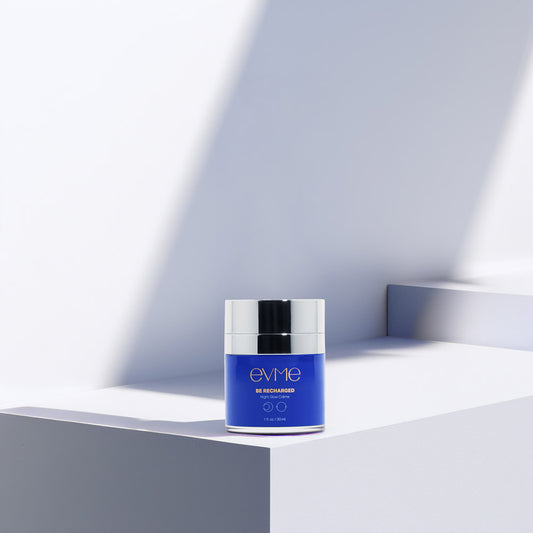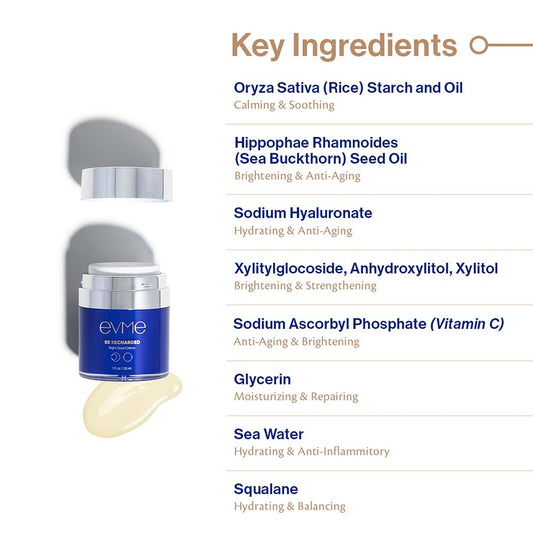Try Evme, allergist-created luxe skincare for sensitive and allergic skin.
Shop All ProductsWhat Can I Do While My Skin is Reacting?
November 30, 2022

As an allergist, I often see patients coming into my office with skin reactions. They hope that testing can help them figure out what they’re reacting to—only to find out that the testing is not very reliable or accurate, especially in the case of contact dermatitis (topical skin allergies).
My patients often attribute their reactions to a couple common factors like laundry detergent or food they’ve eaten. Realistically, in the case of contact dermatitis, the reaction is most likely due to a novel substance the skin had come in contact with—and not a food or an environmental allergen like pollen or animal dander.
My own list of potential products that could cause contact dermatitis is much more directed and includes new personal care products, candles, fragrances, diffusers, cleaning solutions, and laundry detergents—to name just a few.
Because contact dermatitis is a delayed reaction typically occurring in the areas where the allergen has touched your skin, you must trace your steps and think about all the topical exposures that you’ve had within the last few days prior to the reaction starting.
Do Some Detective Work Yourself
Personal care products are one of the most likely culprits that cause contact dermatitis. When you start noticing a rash or potential reaction on your face, it’s best to read the ingredient labels on your personal care products to try to identify what could be causing the reaction.
Current Tests Have Limited Accuracy
Contact dermatitis typically occurs days to even weeks after starting a new product, so it can be hard to identify the cause. There's a type of testing called patch testing available through an allergist or dermatologist to guide you in determining what you are reacting to. However, current testing techniques are not very reliable (they only pick up allergies about 20-30% of the time!) and can be time-consuming and extremely pricey.
Take a More Reliable Approach
The approach that I generally recommend is to think about newer items in your skin repertoire that could be causing this type of reaction. You can learn about some top skin sensitizers in one of my other videos called “Top Sensitizers in Modern Life.”
Address the Symptoms
While having a contact dermatitis reaction, I recommend paring back to a simple routine with products that you have used for a long time without a reaction or something considered to be very “hypoallergenic.” Most allergists and dermatologists recommend generic drugstore hydrating creams or petroleum jelly, since they have a reputation for being less allergenic. It could take at least 2-3 weeks until your skin starts looking better. I know this sounds like a long time, but it takes time for the skin to heal!
If your reaction does not improve on its own, make an appointment to see your doctor! A good internist, general practitioner, allergist, or dermatologist should be able to help you. Many cases require topical steroid creams prescribed by your doctor to help reduce the inflammation. In severe cases, oral steroids may be prescribed if it’s affecting a large part of the body or the reaction is particularly severe.
Preventing Future Rashes
Knowing the categories of allergic triggers, as well as the timeline for contact dermatitis, may go a long way toward helping to understand the underlying reason for your reaction. However, we understand that this is easier said than done.
Realistically, any ingredient has the potential to be allergenic. That’s why, at Evme, we’ve done everything in our reach to source the most non-reactive ingredients to get as close as possible to being allergen- and irritant-free!
Recommended articles
Evme Sans-Allergenic Skincare Products
- Choosing a selection results in a full page refresh.



